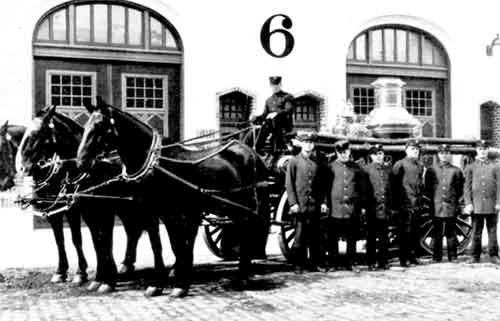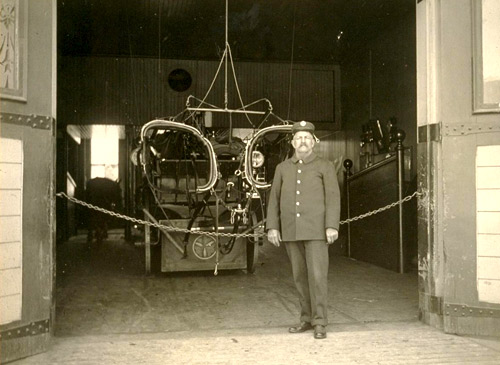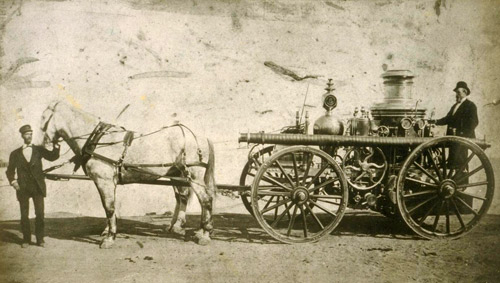

3 horse team pulling engine - SFFD - Engine 6 - Photo: Charles E. Fennel
The horses were trained to respond to the alarm, and, as soon as the alarm sounded, would proceed out of their stalls and stand in front of the doors while harnesses were lowered from the ceiling. Once the harnesses were lowered, firefighters would quickly attach the steam engine (the Victorian era equivalent to the fire truck) and buckle the harnesses. As soon as the doors opened, the horses would run. The San Francisco fire department was known for being able to get to a fire faster than any other department. Once the horses were underway, there was no stopping them. Some horses were trained well enough to know what alarm signals corresponded to where the fire was and would proceed to the fire without hesitation. The steam engines were specially built to maintain balance even around tight turns. This allowed for firemen to drive the steam engines as quickly as the horses could go without worrying about the engine flipping.

SFFD - Horse Harnesses
As these new inventions became more widely accepted in the firefighting community, their weight was a handicap. Many once-reliable fire horses were losing steam just blocks away from the firehouse. It was in 1906 (coinciding with the great 1906 earthquake along the San Andreas Fault Line) that the use of motorized fire apparatus was finally accepted after years of doubt, which also stemmed from the emotional connections that the firemen had to their horses. The more primitive fire trucks had large gasoline engines solely for the purpose of replacing the horses. It was only later that their power was used to pump water through fire hoses. A new century brought in a new advancement, which continued to evolve into the sleek, efficient fire trucks that are now used throughout the country today.

SFFD - Horse Harnesses